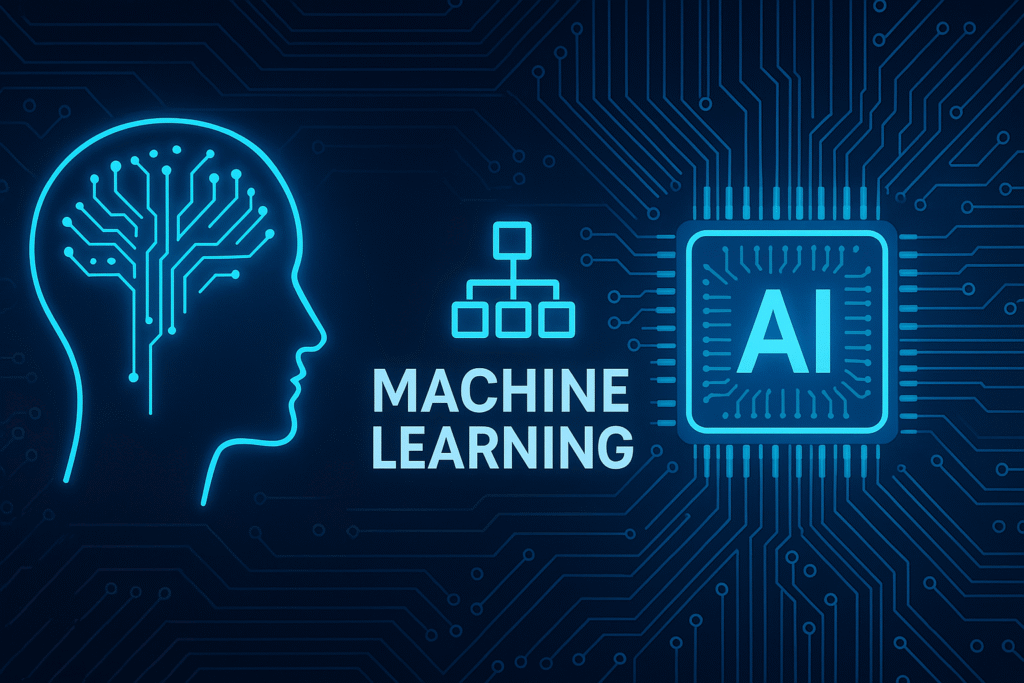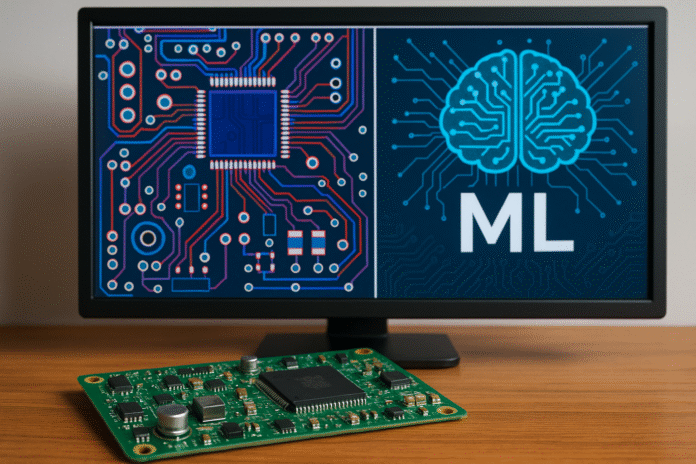Machine learning (ML) is transforming how engineers approach hardware development, creating new opportunities to optimize, automate, and enhance performance in modern electronics. From predictive modeling to real-time fault detection, ML is rapidly becoming an indispensable tool in the industry. A successful integration of ML starts from the foundation—solid pcb design—and extends into every stage of engineering, from simulation to manufacturing and field performance monitoring. By combining machine learning algorithms with electronic design automation (EDA) tools, engineers can produce faster, smarter, and more reliable systems while minimizing design iterations and cost.
What is the Role of Machine Learning in Modern Technology?
Machine learning enables systems to learn from data rather than being explicitly programmed for every scenario. In the context of electronics, it shifts the design approach from reactive problem-solving to proactive optimization.
Key roles ML plays in modern electronic design include:
- Design Optimization: Automating component placement, routing, and signal integrity improvements.
- Fault Prediction: Identifying weak points before manufacturing, reducing costly rework.
- Performance Prediction: Estimating how a circuit will behave under different environmental or operational conditions.
- Manufacturing Quality Control: Detecting defects in PCBs and semiconductor fabrication using image recognition.
- Adaptive Systems: Enabling electronics that learn and adjust parameters in real time for better efficiency.
For example, ML algorithms can analyze millions of possible routing configurations in a PCB layout and select the one that minimizes interference, reduces heat hotspots, and improves manufacturability.
Does ECE Have Machine Learning?
Electrical and Computer Engineering (ECE) now includes machine learning as an essential component of modern curriculum and research. Universities and industry R&D labs are integrating ML into:
- Electronic Design Automation (EDA) Tools
- VLSI (Very Large Scale Integration) Chip Design
- Signal Processing Applications
- Embedded Systems
- Power Electronics Optimization
- IoT Device Intelligence
ECE engineers today are not only expected to understand transistors and circuit theory but also to work with data pipelines, train ML models, and deploy them into firmware and hardware.
Machine Learning in VLSI Design
VLSI design has benefited greatly from ML’s predictive and optimization capabilities.
Applications include:
- Placement and Routing Optimization: Using reinforcement learning to decide where to place millions of transistors for speed, power, and area optimization.
- Power Analysis and Reduction: Predicting power consumption early in the design process.
- Timing Closure Acceleration: Identifying timing violations before they propagate through the design cycle.
- Design for Manufacturability (DFM): Improving yield by predicting fabrication defects.
By using ML algorithms trained on historical chip layouts and fabrication outcomes, designers can make better-informed decisions without having to wait for physical prototypes.
How Machine Learning Improves PCB Design
PCB design is one of the areas most visibly impacted by ML integration. Modern PCB design software now integrates AI-driven features such as:
- Auto-routing with EMI Reduction: Algorithms that learn from previous designs to avoid noise-sensitive paths.
- Thermal Simulation Predictions: Identifying potential overheating issues based on component placement and board geometry.
- Component Selection Optimization: Suggesting parts that meet performance needs while balancing cost and supply chain risks.
- Real-Time Design Rule Checking: Preventing violations of manufacturing constraints during the design process.
ML-enhanced PCB design tools can also run multiple simulations in parallel, using learned models to predict which configurations will work best, significantly reducing iteration cycles.
What Problems Can Machine Learning Solve in Electronics?
Machine learning addresses many pain points in modern electronics, including:
- Signal Integrity Issues – ML can analyze signal traces and predict crosstalk or reflections before manufacturing.
- Thermal Management Challenges – Algorithms predict hotspots and recommend improved layouts or heat sink configurations.
- Design Rule Violations – Adaptive algorithms flag potential violations instantly.
- Manufacturing Defects – Vision-based ML systems inspect PCBs for solder bridges, missing components, or alignment errors.
- Predictive Maintenance – In deployed devices, ML can detect early signs of component degradation and schedule maintenance before failure.
Machine Learning for Embedded Devices
Embedded systems often have tight constraints in processing power, memory, and energy consumption. ML allows these systems to:
- Process Sensor Data Efficiently: Identify patterns or anomalies without sending all data to the cloud.
- Run Edge AI Models: Performing inference locally for speed and security.
- Adapt in Real Time: Changing operational parameters based on environment or user behavior.
- Improve Battery Life: Predicting workload demands and adjusting power consumption dynamically.
For example, wearable devices use ML to differentiate between walking, running, or resting—optimizing data recording and reducing unnecessary computation.
AI-Driven Testing and Validation
Testing and verification are time-consuming phases of electronic design. ML can accelerate them by:
- Modeling Failure Modes: Predicting where faults are most likely to occur.
- Automating Test Sequence Generation: Creating optimized sets of test cases to cover all functional and edge scenarios.
- Analyzing Test Results Faster: Detecting subtle trends that indicate underlying design weaknesses.
Machine learning also enables adaptive testing—systems that change their test approach based on real-time feedback.

Machine Learning in IoT Device Design
IoT devices collect vast amounts of data that can be leveraged for:
- Predictive Analytics: Identifying failures before they happen.
- Dynamic Configuration: Adjusting settings to reduce power consumption or improve performance.
- Security Enhancements: Detecting unusual device behavior that might indicate a cyberattack.
- Bandwidth Optimization: Sending only relevant or processed data to the cloud.
An IoT sensor for industrial equipment, for example, could use ML to identify vibration patterns that predict bearing failure weeks in advance.
Advantages of Integrating ML into Electronics
- Faster Design Cycles: Automation of repetitive tasks accelerates time-to-market.
- Lower Costs: Early error detection prevents costly redesigns.
- Improved Reliability: Continuous optimization leads to more stable performance.
- Energy Efficiency: ML-based power management extends battery life.
- Customizable Performance: Devices can be tailored to specific use cases with minimal manual intervention.
Challenges of Machine Learning in Electronics
While ML offers many benefits, there are hurdles:
- Data Requirements: Effective training requires large, high-quality datasets.
- Integration Complexity: Combining ML models with embedded hardware requires expertise in both domains.
- Processing Constraints: Many embedded devices have limited computational power.
- Explainability: Understanding how ML decisions are made can be difficult, which is critical in safety-critical applications.
Solutions include:
- Using transfer learning to reduce data needs.
- Employing model compression techniques for edge deployment.
- Implementing hybrid approaches where heavy computation occurs in the cloud.
Real-World Applications
1. Autonomous Vehicles – ML optimizes sensor fusion for radar, lidar, and cameras.
2. Aerospace Systems – Predictive maintenance on avionics and propulsion systems.
3. Medical Devices – Patient monitoring systems that learn individual health patterns.
4. Consumer Electronics – Smartphones optimizing battery usage and camera performance through ML.
5. Industrial Automation – Machine learning for fault detection in PLC-controlled systems.
Future Trends
The role of ML in modern electronic design will continue to expand:
- Generative Design: AI creates entire circuit layouts from functional specifications.
- Self-Healing Electronics: Systems detect faults and reroute signals without human intervention.
- On-Chip AI Accelerators: Dedicated ML processors embedded in FPGAs and ASICs.
- Collaborative AI-Human Design Systems: Engineers and ML models work interactively on designs.
Conclusion
Machine learning is no longer an experimental feature in electronic design—it is a practical, results-driven approach to building better systems faster. From pcb design optimization to predictive maintenance in deployed systems, ML is reshaping how engineers work across the entire lifecycle of a product. While challenges remain in data collection, integration, and processing limitations, advances in tools, hardware, and algorithms are steadily lowering these barriers. In the coming years, ML will become as fundamental to electronics engineering as schematic capture and simulation are today.
